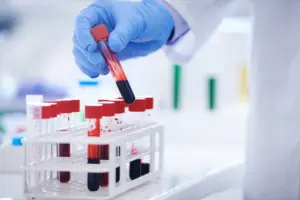
A significant increase in prostate cancer diagnoses among younger men has alarmed health professionals in Australia. Ben Jenkins, diagnosed with an aggressive form of the disease at age 36, underscores the importance of early testing. His general practitioner recommended a prostate-specific antigen (PSA) test that revealed concerning results, leading to successful treatment. Jenkins reflects on his experience, stating, “I do feel like I’m lucky and that my intuition served me well to go and get that test because in the end I feel like it spared me a lot of grief.”
According to data from the Australian Institute of Health and Welfare, the rate of prostate cancer cases in younger men has surged from 4.9 cases per 100,000 people to 12.5 cases over the past 25 years. This trend highlights an urgent need for awareness and action regarding prostate health.
Rising Risks and the Importance of Family History
Urologist Weranja Ranasinghe points out that one of the strongest risk factors for prostate cancer in younger men is a family history of related cancers. “If there’s a family history of any prostate, breast or ovarian cancers, those may be at a higher risk,” he explained. Prostate cancer remains the most commonly diagnosed cancer in Australia, with approximately 4,000 men expected to succumb to the disease by the end of the year. For more aggressive forms, survival rates can dip to just 12 percent.
While there has been a growing awareness of other cancers, such as breast and colon cancer, Ranasinghe notes that misconceptions persist regarding prostate cancer being solely an older man’s disease. Current medical guidelines do not mandate universal PSA testing for Australians. However, new recommendations expected by the end of 2025 are likely to advocate for baseline checks for men in their 40s, particularly those at higher risk.
The Urological Society of Australia and New Zealand has called on men to understand their risk factors and discuss their family history with healthcare providers.
Changing Perspectives on Prostate Health
Ranasinghe emphasizes that general practitioners have shifted from traditional examinations to utilizing blood tests and MRI scans, which have improved the detection of aggressive prostate cancers. “If you have an MRI which is normal, most men don’t need a biopsy anymore because MRIs are very accurate in picking up aggressive prostate cancers,” he noted.
Jenkins, who underwent surgery to remove his prostate, expresses concern that outdated notions of masculinity may prevent men from seeking necessary medical checks. After a period of recovery, he was able to resume a fulfilling sex life despite the challenges posed by his diagnosis. Though he cannot conceive naturally, he and his wife welcomed two children after he preserved his sperm prior to surgery.
“You’re no less of a man for going to get checked, you’re no less of a man for having prostate cancer if that is the outcome, no less of a man for having your prostate removed,” Jenkins stated.
He encourages men to take charge of their health by initiating conversations about prostate testing with family members, suggesting, “Say, ‘hey, I’ve just been thinking about getting a PSA test; have you had one?’ That’s going to open up a door.” By discussing these issues openly with fathers, grandfathers, and uncles, Jenkins believes that men can help dismantle the stigma surrounding prostate health and encourage proactive measures.
The increasing rates of prostate cancer among younger men highlight a critical need for awareness and open discussions about health. Jenkins’ story serves as a reminder that proactive testing and familial dialogue can lead to early detection and better outcomes.






